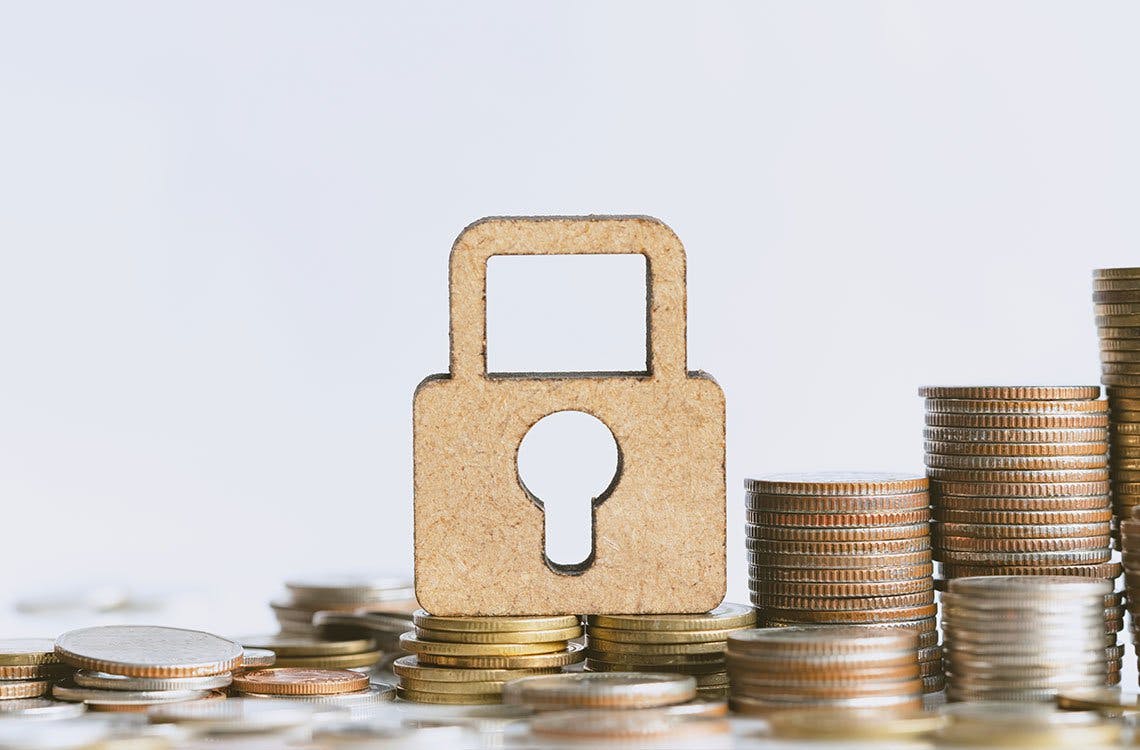
Cash is...Secure
Innovative and sophisticated security features used in modern banknotes have managed to deter counterfeiting in recent years, so much so that cash is 99.9988% secure. In the UK alone, there are 3.8 billion genuine banknotes in circulation and less than 1 in 5,000 banknotes are counterfeit.
Depending on where you live, your nation or region’s banknote can feature any number of intricate security features, but what are they and how can you spot them?
- Security threads
Security threads can be found in almost all banknotes as they are easy to recognise, versatile, and can vary in design. Thanks to their changing visual effects and combinations, countries and territories can include anything from intricate patterns, symbols, fluorescence and 3D effects, to name a few, in their security threads making banknotes increasingly difficult to copy.
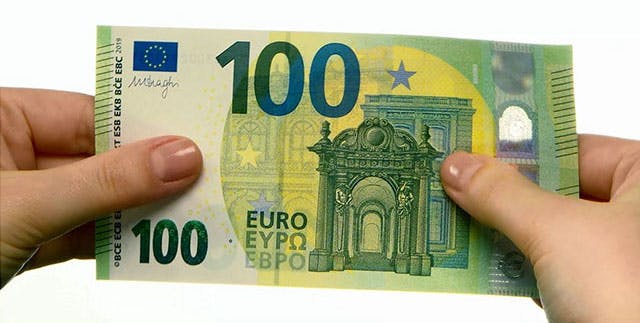
The €100 denomination banknote with security thread
When held towards sunlight, the Euro banknote shows the security thread which features the ‘€’ symbol and the value of the banknote.
2. Micro Text
It might sound like something out of a Dan Brown book, but some currencies do indeed feature micro texts as part of anti-counterfeiting security measures.
Only to be seen using a magnifying glass, micro texts are used on a variety of banknotes. The Swiss Franc, for example, features information about the individual printed on the banknote.
3. See-through register
The £50 banknote from The Bank of England uses a see-through register which, to the naked eye, looks like random symbols either side of the note. However, once held up to the light, authentic banknotes reveals the ‘£’ symbol.

4. Holograms
Holograms are one of the most widely used security features used on banknotes today, appearing on more than 300 denominations in 97 currencies. Due to their versatility, they can be incorporated into “security threads, stripes, patches and window features.”
The New Zealand Dollar features a holographic window as part of their design, proving to be a useful security feature and an opportunity to honour a few of the wild species of birds native to the country.
5. Watermarks
Like many security features, watermarks on banknotes can be revealed by holding the banknote to natural light. An example of where this technique is used is in the United States $100 dollar bill which reveals a faint image of Benjamin Franklin.
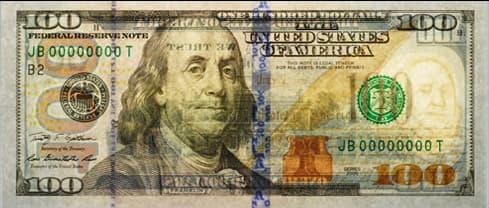
6. Luminescent Ink
The curious case of the Japanese Yen is famous in the banknote world for its use of luminescent ink. The Governor’s Seal glows orange under UV light while some background patterns glow a yellowish-green.
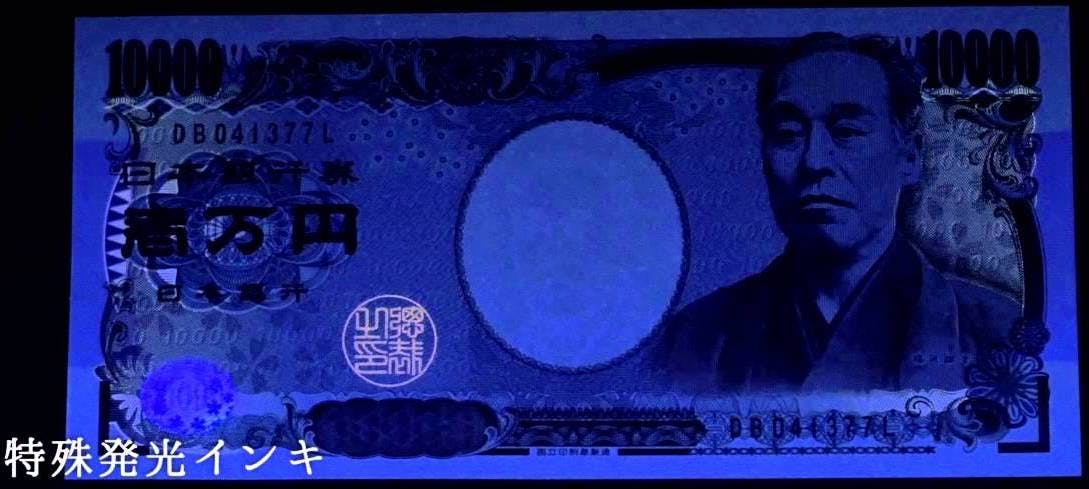
7. Plastic money
Money, historically, has been printed on everything from paper to leather, and even on silk, to name a few. More recently, moving on from cotton paper, governments have been using polymer to create plastic banknotes. As well as being more durable, synthetic polymer banknotes allow designers to create new, innovative and almost impossible to replicate banknotes.
Canada’s polymer banknotes, launched in 2012, demonstrate this with their use of transparent space in their denomination designs.
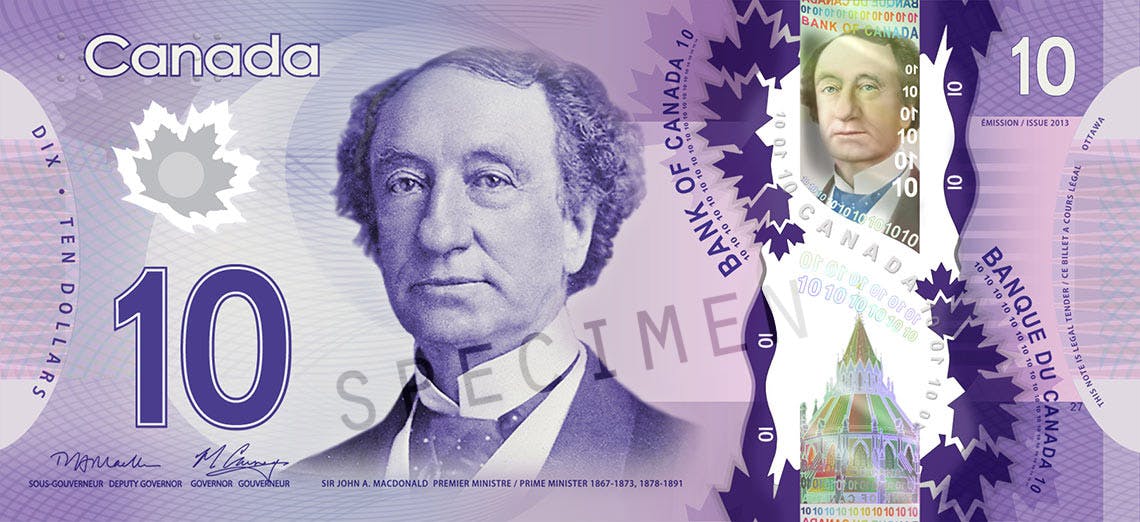
The future of cash security?
The security features of cash are constantly adapting and innovating to continue to deter counterfeiting measures. Whilst we cannot predict what features are currently in development, with each release of new denominations of currencies, we can look forward to seeing the latest security elements being revealed.
